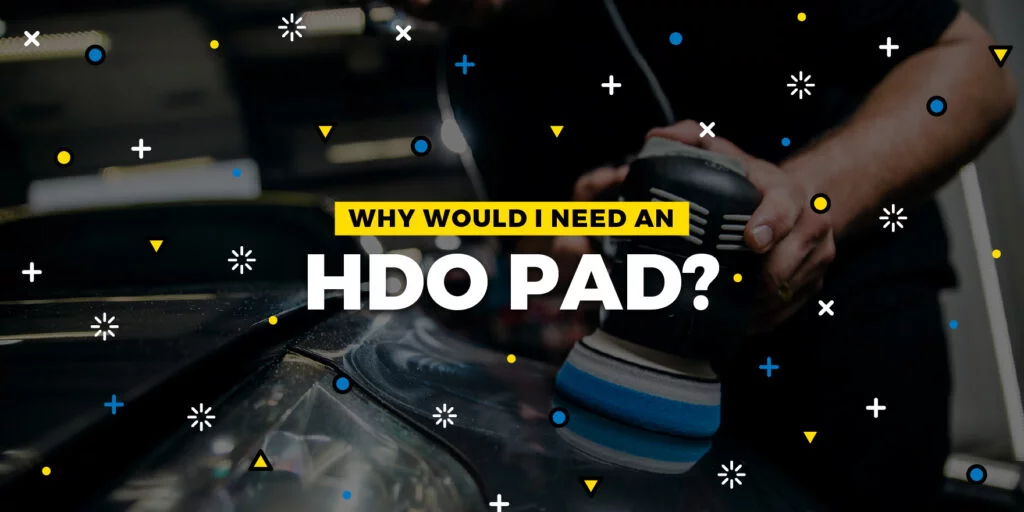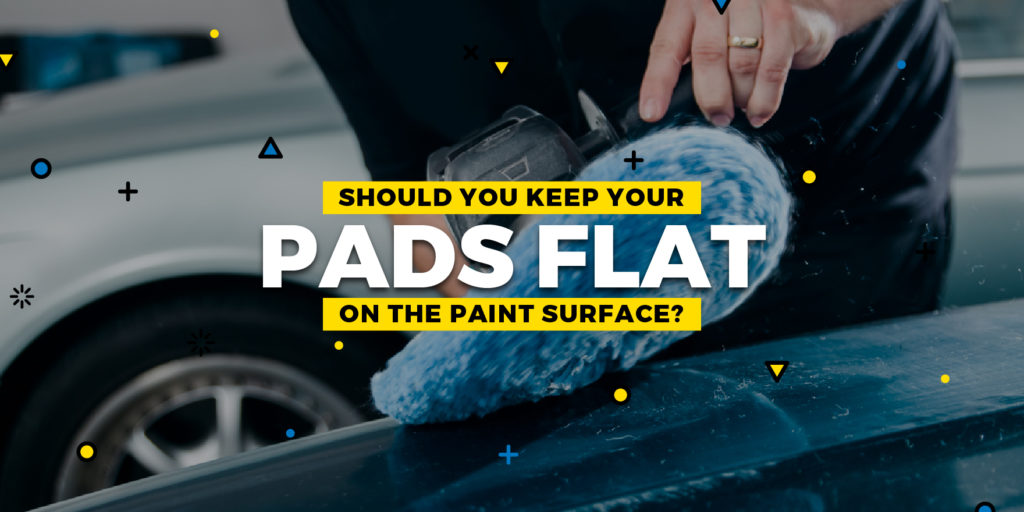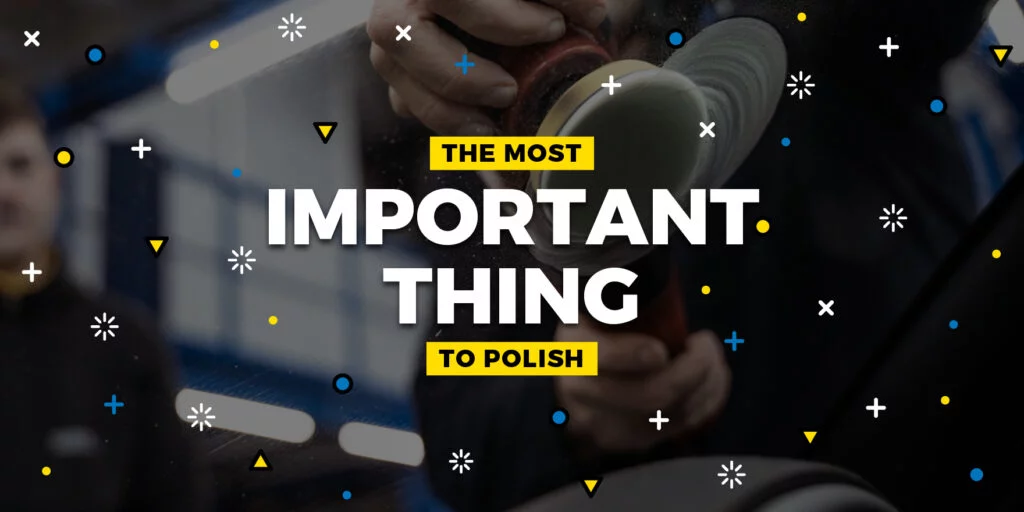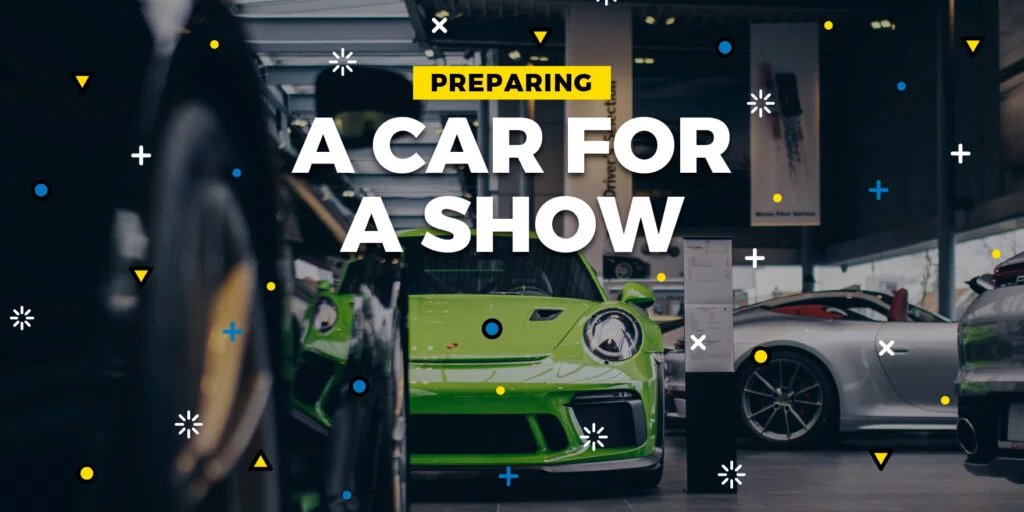
Why Would I Need an HDO Pad?
Written for the IDA Detail Dialogue, Published December 2022 In detailing, we naturally obsess over tiny details – hence the name, I suppose. A smudge, fingerprint, speck, or stain can

To give a general answer to this question: no, you do not have to keep your pads flat to the paint surface at all times. You certainly can, but it is in no way a requirement as a detailer. Sometimes, it is actually more effective not to and in other cases, impossible to do so.
Let’s explore some techniques, and examples, where using only part of the pad face makes a big difference to your machine polishing operation.
It’s a common misconception that keeping your pad flat on the paint surface is necessary for proper and effective correction. However, tilting the pad by just a few degrees is enough to make a significant difference to your buffing.
By tilting the pad in a way that leaves just enough space for your pinky finger to fit underneath one side, you roughly halve the contact patch. This can be checked by taking a primed pad and looking at the impression it leaves when you put it on the paint surface. A flat pad will leave a full circle, whereas a tilted pad will leave a semi-circle.
If you tilt the pad even further, you get even more cut focused on an even smaller contact area, and so forth. Now, let’s discuss four reasons why your detailing efficiency will improve, by tilting your pad and avoiding keeping it flat on the paint surface.
Basic rules of physics explain that pressure is equal to force divided by area. Because the core purpose of using a machine polisher is to achieve ‘abrasion’, to detailers, this means that more pressure equals more cut. Under higher pressure, the pad face effectively removes more paint material (and the defects found on said paint material) at a higher rate.
To reference that original basic equation, if we tilt the polisher so that only part of the pad face is in contact with the paint as opposed to the whole pad, we create that increase in pressure and open up the door to greater efficiency. This technique may not always be applicable in every circumstance; however, it’s important to know the option is there at our disposal!
Swirls, scratches, holograms, stains, and other paint surface flaws can vary in depth considerably. In these situations, you need to remove more material in some areas than others to achieve the desired result.
Suppose you have a scratch that is 5 microns deep on a panel with only minor swirls of about 1 micron in depth – there’s no reason to go removing 5 microns over the whole panel!
Instead, by slightly tilting the pad, not only do you increase your cutting efficiency as described above, but you focus the contact area directly on the more intense defect without needlessly removing extra material from the surrounding areas!
This advantage is more noticeable when polishing with a rotary, but the same principle applies on a random orbital or forced dual-action tool as well.
If a pad is constantly rotating (or orbiting) in full contact with the paint surface, the constant friction generates more heat with no escape for it. Having half the pad face traveling through the air introduces some thermal relief to the operation, countering the cumulative heat build-up and reducing the risk of the paint getting too hot.
Nowadays, cars tend to have a lot more curved shapes than they might have had in recent decades. This means that oftentimes it’s not even possible to keep a buffing pad flat, because the car isn’t flat to begin with!
If you’ve ever polished a curvy car, you’ve likely already experienced this anomaly. No matter how hard you try, ass you polish over a curve your (flat) pad will be lifted up on one side (or both) at any given moment as it travels across the hump.
Curves prompt you as a detailer to pay special attention to increased pressure and increased cut concepts, especially if you have never considered them before. Kelly Harris frequently teaches to watch out for the compound residue trails you leave behind while polishing and use that to both visualize and keep track of which parts your pad has already hit. It is easy to ‘double-hit’ convex curves unintentionally if your movements are not planned carefully.
To further explore these four reasons why pad tilt improves efficiency, be sure to follow our YouTube, Facebook, and Instagram accounts, where you can view educational content designed exclusively to help make your polishing life easier!

Written for the IDA Detail Dialogue, Published December 2022 In detailing, we naturally obsess over tiny details – hence the name, I suppose. A smudge, fingerprint, speck, or stain can

Polishing glass ranks as one of the most overlooked detailing skills and services. Aside from being aesthetically pleasing to have pure transparent glass, it’s incredibly important–literally a matter of life

I don’t really talk much about it these days but my experience working with / around cars goes back a looooooong way, and actually included organizing car shows. I would

Written for the IDA Detail Dialogue, Published December 2022 In detailing, we naturally obsess over tiny details – hence the name, I suppose. A smudge, fingerprint, speck, or stain can

Polishing glass ranks as one of the most overlooked detailing skills and services. Aside from being aesthetically pleasing to have pure transparent glass, it’s incredibly important–literally a matter of life
950 Blue Ribbon Cir N
Oconomowoc, WI 53066
#lakecountrymfg
Select Your Language